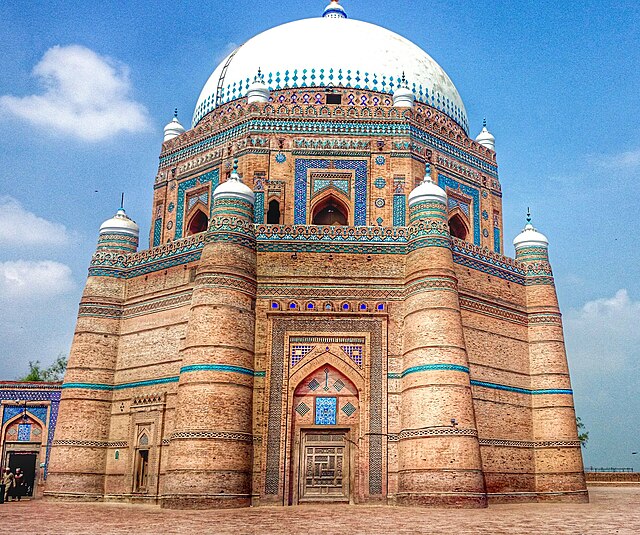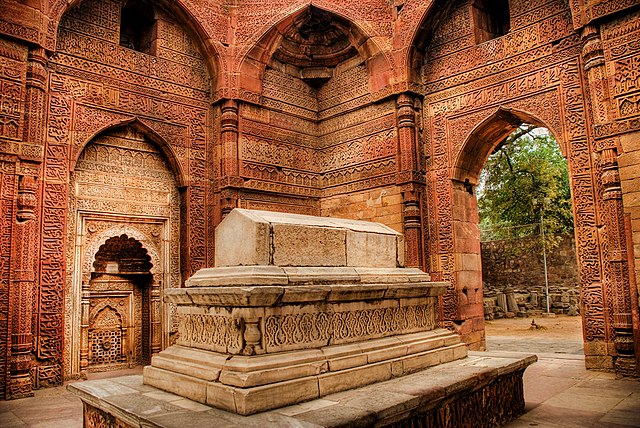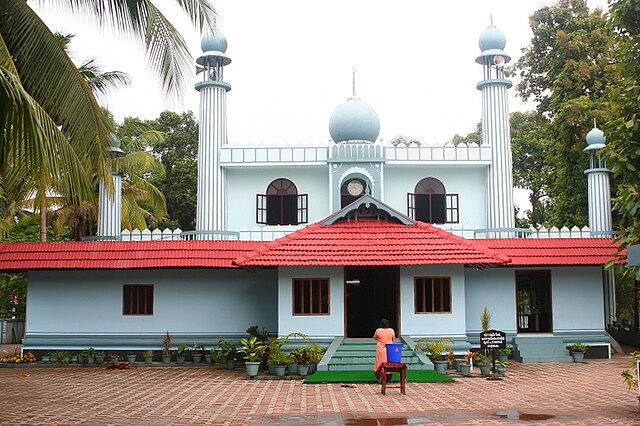Indo-Islamic architecture
Indo-Islamic architecture is the architecture of the Indian subcontinent produced by and for Islamic patrons and purposes. Despite an initial Arab presence in Sindh, the development of Indo-Islamic architecture began in earnest with the establishment of Delhi as the capital of the Ghurid dynasty in 1193. Succeeding the Ghurids was the Delhi Sultanate, a series of Central Asian dynasties that consolidated much of North, East, and Central India, and later by the Mughal Empire during the early 16th century. Both of these dynasties introduced Islamic architecture and art styles from West Asia into the Indian subcontinent.
Tomb of Shah Rukn-e-Alam (built 1320 to 1324) in Multan, Pakistan
The Buland Darwaza gateway to Fatehpur Sikri, built by Akbar in 1601
The Qutb Minar (left, begun c. 1200) next to the Alai Darwaza gatehouse (1311); Qutb Complex in Delhi
Mausoleum of Iltutmish, Delhi, by 1236, with corbel arches
Islam is India's second-largest religion, with 14.2% of the country's population, or approximately 172.2 million people, identifying as adherents of Islam in a 2011 census. India also has the third-largest number of Muslims in the world. The majority of India's Muslims are Sunni, with Shia making up around 15% of the Muslim population.
The Taj Mahal in Agra
Cheraman Perumal Juma Masjid on the Malabar Coast, probably the first Mosque in India.
The Taj Mahal in Agra, India. It was built under Mughal emperor Shah Jahan in the 17th century, and represents Indo-Islamic architecture.
Muslim family from Malabar, 1540








